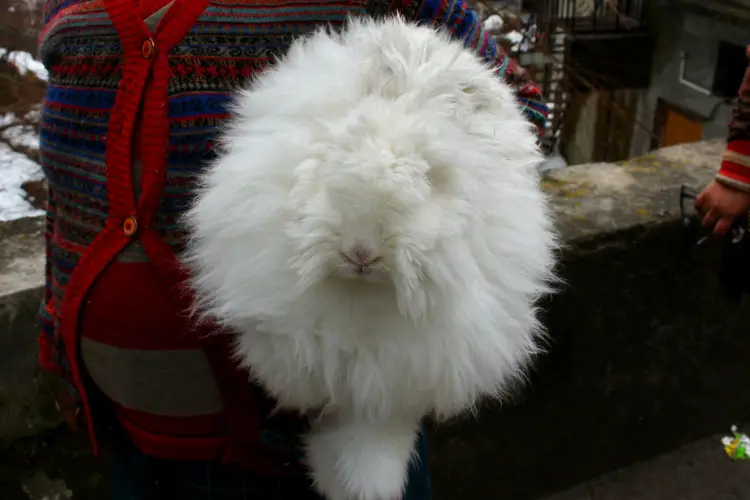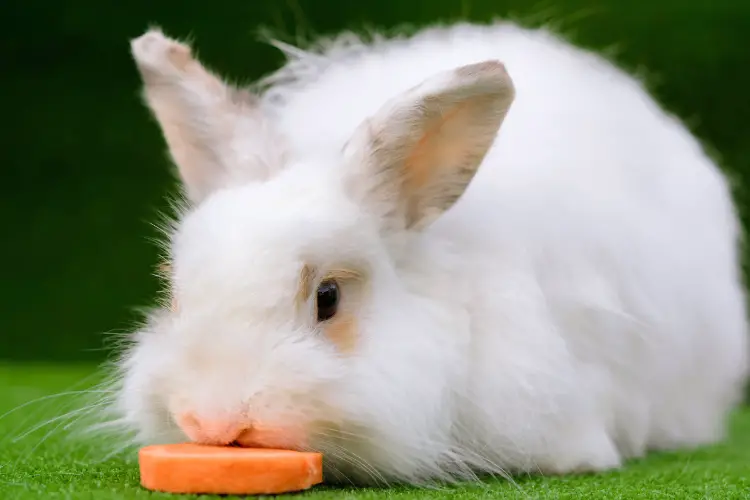Angora rabbits are prized for their luxuriously soft wool coats. Caring for these gentle, high-maintenance creatures requires dedicated effort and attention to detail. By following a consistent routine, you can ensure your Angora’s health, happiness, and production of premium fiber.
In this detailed care, the Angora Rabbit checklist outlines essential daily, weekly, and monthly tasks to keep your beloved Angora thriving.
Daily Angora Rabbit Care
1. Check Food and Water
- Provide unlimited access to fresh hay (timothy or orchard grass) for proper digestion
- Refill water bottles or bowls with clean, cool water to prevent dehydration
- Offer a daily portion of premium Angora rabbit pellets (1/4 to 1/2 cup per 5 lbs body weight)
- Supplement with fresh greens like romaine lettuce, parsley, and carrots for enrichment
2. Groom and Handle
- Gently groom your Angora for 10-15 minutes using a slicker brush to remove loose fur and prevent matting
- Properly support their bodies when picking them up to avoid injury
- Interact calmly and offer healthy treats like seedless bananas to build trust
3. Clean Living Space
- Spot clean the litter box, removing damp bedding and fecal piles
- Sweep or vacuum loose hair from the enclosure floor
- Ensure adequate ventilation to eliminate ammonia buildup
4. Monitor Health
- Check for signs of illness like lethargy, diarrhea, or abnormal eating habits
- Examine the rabbit’s body condition, eyes, nose, ears, teeth, and nails
- Contact your exotic vet immediately if you notice any concerning symptoms

Weekly Angora Care
1. Deep Clean Enclosure
- Completely remove all soiled litter and bedding from the habitat
- Disinfect hard surfaces with a 10% bleach solution and allow to fully dry
- Replenish with fresh litter (aspen shavings or paper-based) and comfortable bedding
2. Nail Trimming
- Use proper rabbit nail trimmers to keep nails from curling into paw pads
- Only trim the white portion and avoid the quick (blood vessel) to prevent bleeding
- Offer a favorite treat afterwards to make it a positive experience
3. Brushing and Grooming
- Spend 30-60 minutes thoroughly brushing the entire coat with a slicker brush
- Remove any matted areas using a mat splitter or thinning shears
- Trim long stray hairs around the feet to prevent fur ingestion
4. Hay Supply Check
- Ensure you have at least a week’s supply of fresh, high-quality hay
- Store hay properly in a cool, dry area to prevent mold growth

Monthly Angora Rabbit Maintenance
1. Deep Coat Grooming
- Use a grooming table or towel to perform a complete coat blow-out
- Start at the back and brush through, collecting all the loose undercoat
- Properly store and prepare the collected wool for spinning or felting
2. Habitat Cleaning and Disinfecting
- Remove all accessories and spot clean with a safe, pet-friendly disinfectant
- Fully replace bedding with fresh materials to prevent ammonia accumulation
- Scrub down habitat walls and floors to remove any remaining debris
3. Toe Nail Trim
- Use nail trimmers or an electric dremel tool to carefully trim overgrown nails
- Only trim a conservative amount to avoid hitting the quick
- Styptic powder can stop bleeding if you accidentally trim too far
4. Parasite Check
- Closely inspect your rabbit’s skin, coat, ears and vent area for signs of mites or fleas
- Use only rabbit-safe preventatives or treatments prescribed by your exotics vet
5. Hay and Pellet Rotation
- Safely transition your rabbit to new batches of hay and pellets
- Slowly introduce the new food over 1-2 weeks to avoid digestive upset
6. Purchase Supplies
- Stock up on essential items like bedding, pellets, hay, treats and supplements
- Replace worn-out accessories like litter boxes, hay feeders and toys
7. Veterinary Check-up (optional but recommended)
- Schedule an annual wellness exam to check weight, teeth, nails and overall health
- Discuss molting season, fiber care and any concerns with your exotics rabbit vet
Final Words!
By diligently following this Angora rabbit care checklist, you’ll keep your precious woolly friend happy and produce an abundance of premium fiber for all your felting and spinning needs.
While high-maintenance, the rewards of caring for an Angora far outweigh the effort when you gain a docile, loving companion. Let this guide streamline your routine so you can simply enjoy quality time with your cherished Angora rabbit.


